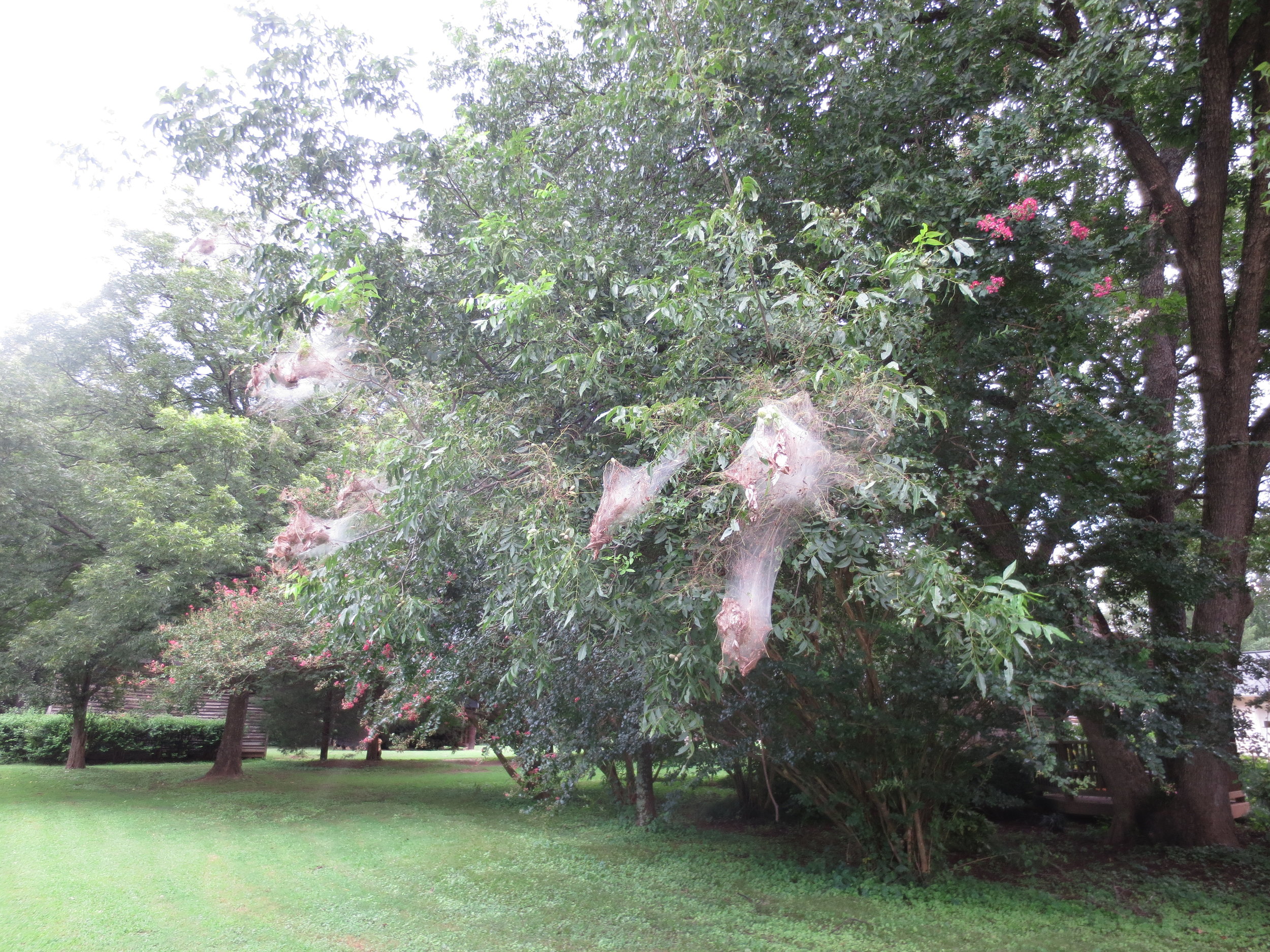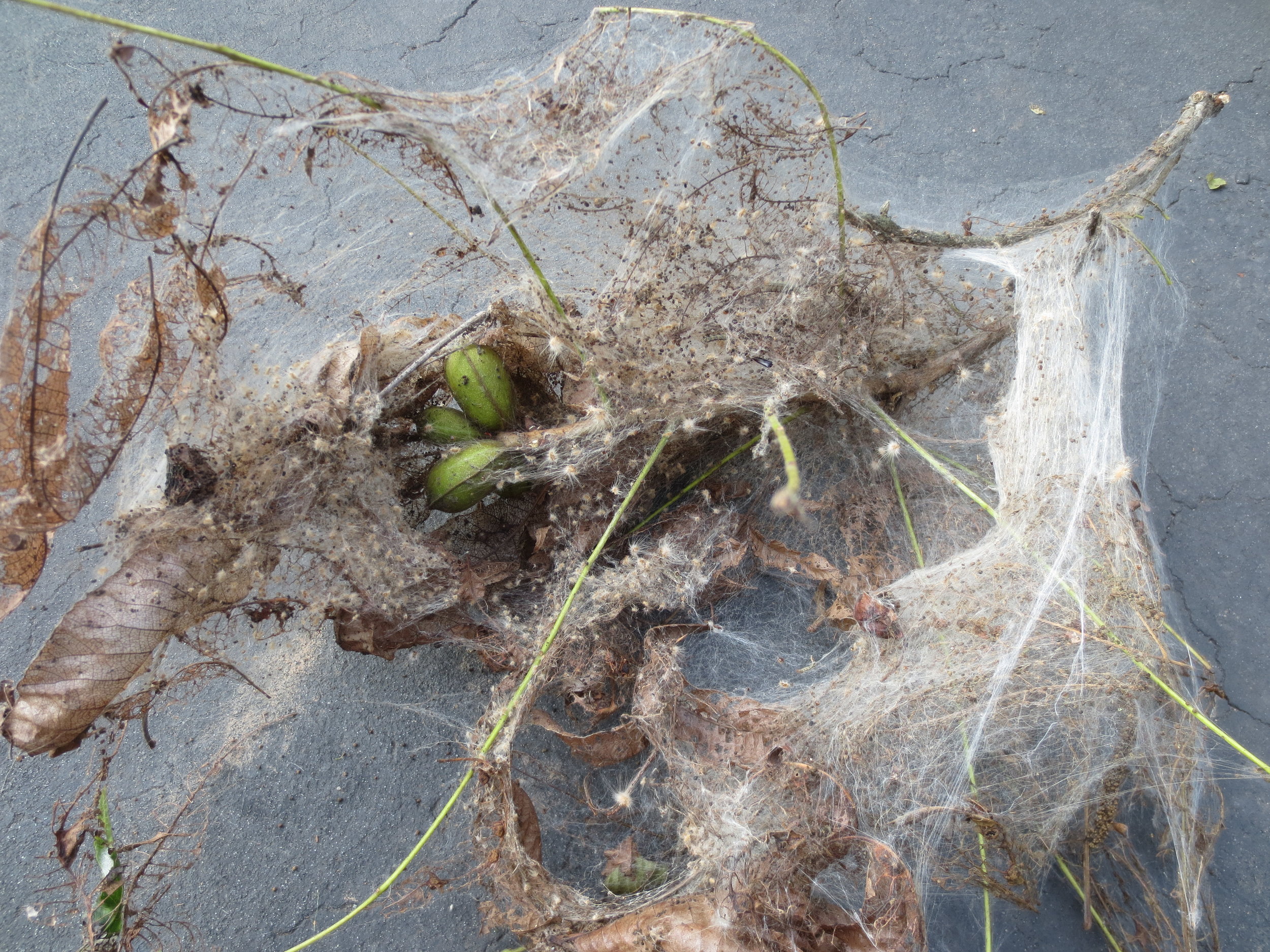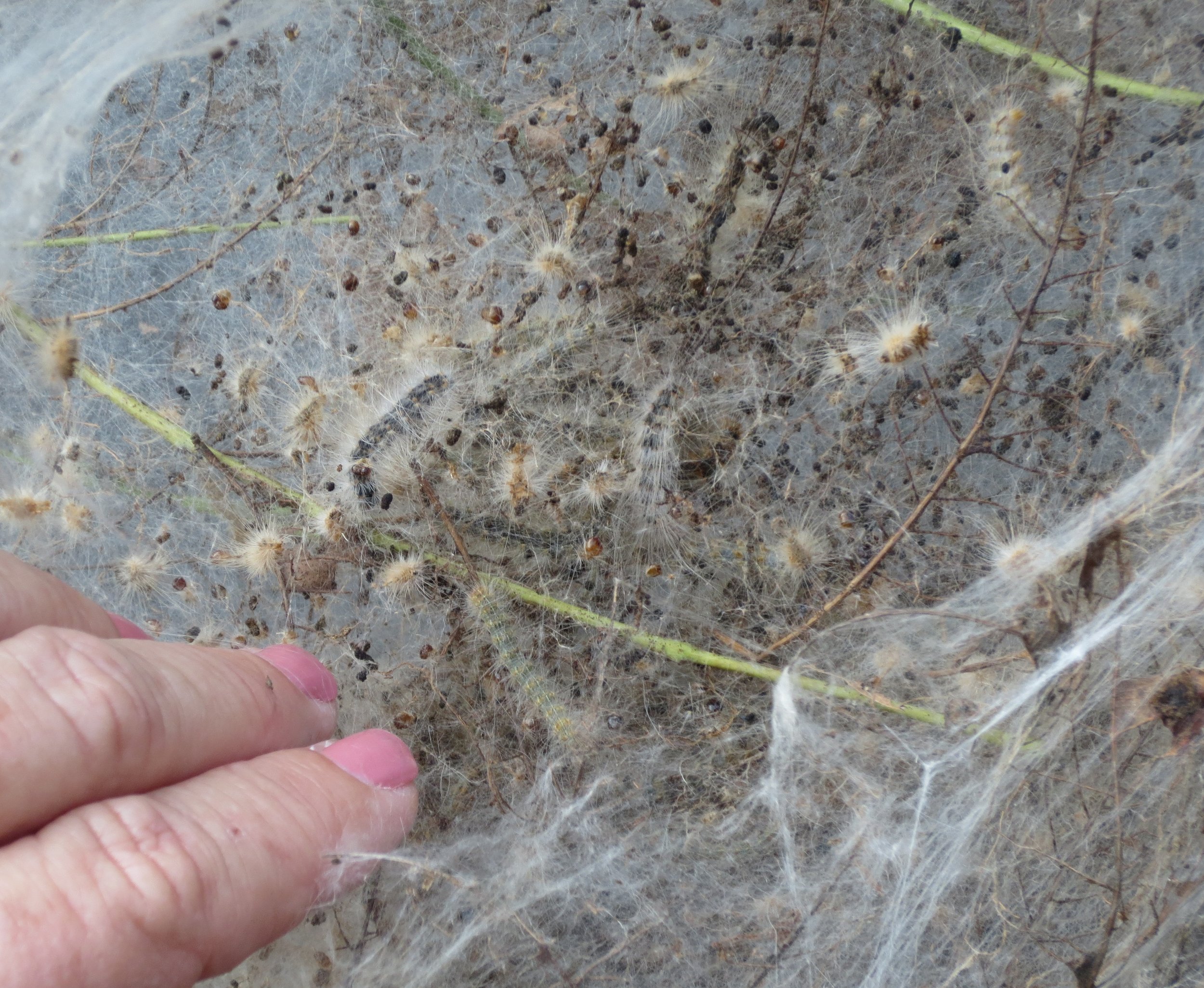Fall webworms are abundant in the Mary Snoddy garden this year. I had mistakenly thought these were tent worms, but I learned that tent caterpillars build their woven nests in tree crotches during spring and summer, while fall tent worms concentrate on the ends of the branches. My pecan trees are stricken this year, but these voracious creatures feed on more than eighty types of trees. Pecan, hickory, poplar, oak, redbud, sweetgum and mulberry appear to be favorite targets.
The diaphanous webs serve to protect the worms while they consume leaves. If you pull one of their webs open, you will find a congregation of worms (they like to hang out with their buddies) that measure just over an inch in length. Coloration varies with the maturity of the worm. The youngsters are pale yellow with fine white hairs. The adults may have a black or red head and their bodies are usually dark green or brown, but retain the white hairs of their youth. Inside the web homes, you’ll also find skeletonized leaves and fecal material, known as frass. One word: Nasty!
The worms mature in about six weeks. They pupate in or on bark or in the soil. With a long, warm fall, there may be two or more generations.
So what does one do about these unsightly pests? My Internet research recommends using dormant oil or insecticide (Sevin, Malathion, Orthene) for control. Since most webs are far above my reach, neither of these options is viable. Removing leaf litter helps with control. I try to prune out the webs within stepladder range, using care to avoid ruining the shape of my trees. I ignore those outside my reach. Some of my arson-minded friends climb a ladder with a lit Tikki torch and burn the webs. When I realized that gravity was going to bring those flaming webs back in my direction, I decided to leave that particular remedy for others.
One thing I have discovered, though, is that tearing the gauzy web open with a long stick or pole is sometimes enough. Birds are quick to see the opportunity for an easy meal, and they help out this lazy gardener. Webworms may defoliate sections of a tree, but they are unlikely to kill it.



